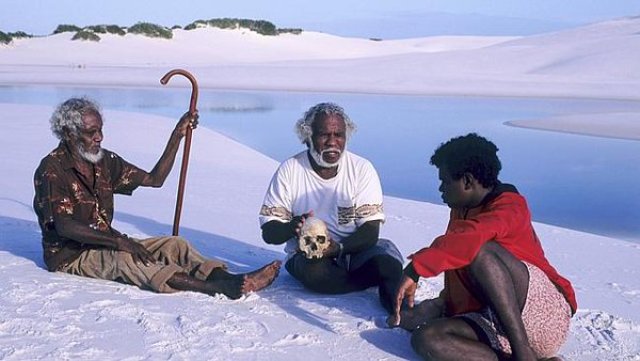
The Wuthathi people have been fighting to get back their spectacular ancestral lands on Cape York, from which they were removed in the 1930s, for nearly four decades. That fight was finally over after the title deeds to the land were handed back in a ceremony at Lockhart River on December 15.
Ownership of the entire white sand country, 1180 square kilometres in and around Shelburne Bay, was formally transferred to the Wuthathi people as Aboriginal freehold land.
About 40,000 hectares — about one-third of the land — will become a national park, to be jointly managed by the state and traditional owners. The Wuthathi hope jobs and economic benefits will flow to them through tourism and conservation management.
Shelburne Bay is dominated by brilliant white silica sand dune fields, some up to 100 metres high, that drop down to the Coral Sea. Scattered throughout the dunes are beautiful freshwater lakes.
There are also 39,000 hectares of internationally-recognised “Ramsar” wetlands, which attract massive numbers of migratory wading birds every winter. The land is home to more than 30 rare and threatened species, including the southern cassowary and the palm cockatoo.
Shelburne Bay has been the traditional homeland of the Wuthathi people for millennia, and the white sand country has been, and continues to be, a central feature of Wuthathi stories and cultural identity.
Traditional owner Phil Wallis said: "Today's a very historical day for us. It's the start of redeveloping our country, and looking after country and managing country and looking at other ventures.
"Because this country is very unspoilt, very untouched, there's a lot of sacred sites out there, a lot of story places the younger generation need to learn and carry on those practices, whether it be gathering food, medicine, teaching those kids about the story places and why they are important to us."
Chairperson of the Wuthathi Aboriginal Corporation Johnson Chippendale said the circle was now “fully complete” after his ancestors were removed from their country four generations ago.
“Our people were some of the best conservationists in the world,” he said. “We have eight seasons in one year. Our people had the knowledge to hunt and gather from different areas, and they knew exactly what time and what place we should be going to collect.”
Queensland Treasurer Curtis Pitt said a “breathtaking landscape” had been “returned to its rightful owners”.
“This is a defining moment in Queensland’s history, culture and conservation — there are few other places like this in Australia,” he said.
Australian Conservation Foundation northern Australia project officer Andrew Picone said the new Wuthathi national park at Shelburne Bay made up the last undisturbed landscape of its type in Australia and was “of international significance”.
He said ACF, which first proposed a national park at Shelburne Bay in 1976, “congratulates the Wuthathi people on this historic day that sees the return of their homelands and thanks them for the creation of Australia’s newest national park”.
In the 1960s much of the Shelburne Bay region was turned into cattle properties as the Queensland Government tried to open up north-eastern Cape York as a beef producing region.
In the mid-1980s Joh Bjelke-Petersen’s government issued sand mining leases for the dune fields of Shelburne Bay. But in 1987 the Bob Hawke federal government used its foreign investment powers to reject the proposal, following a national campaign led by the Wuthathi people and an alliance of conservation groups.
Hawke said silica sand mining in the area would be "contrary to the national interest" because of its impact on the environment and "adverse effect on the Aboriginal community".
With three national parks created by the Wuthathi, there are now a total of 26 Aboriginal-owned and jointly-managed national parks covering more than 2 million hectares in Cape York.
Like the article? Subscribe to Green Left now! You can also like us on Facebook and follow us on Twitter.